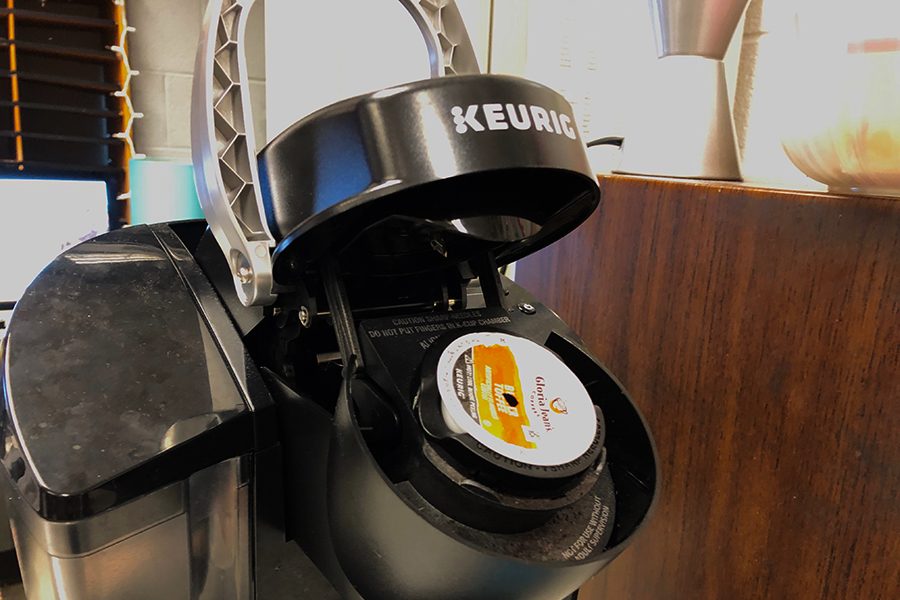It’s time to cut K-cup use
The Keurig in the back corner of the Newssteak classroom sits open as an editor neglected to throw away their used cup.
When Keurigs were first launched in 1988, they took the world by storm. We love the convenience of them. Popping in a K-Cup before work or school to have coffee brewed in less than a minute before rushing out the door makes them so appealing to the everyday American. However, like plastic straws, our love for convenience is trashing landfills across the country.
Keurig K-Cups are made of a non recyclable #7 composite plastic, and despite the Keurig company promising to make all of their K-Cups recyclable by 2020, it will not make up for the billions upon billions of K-Cups that continue to fill landfills. In fact, 8.3 billion K-Cups were sold in 2013, which is enough to circle the globe 10.5 times.
The plastic pollution problem is one of the biggest environmental issues of our generation, and these K-Cups that take thousands of years to decompose are a major contributor. Even if you’ve stopped using plastic straws to save the turtles, your daily coffee pods can end up in the ocean, too. Over time, the plastic breaks down into smaller and smaller pieces, becoming a choking hazard for your favorite green sea animals.
K-Cup use needs to stop, and there are plenty of solutions. Go back to classic drip coffee machines. Everyone used to use them once, there’s no reason why we can’t go back to them now. All K-Cups provide us with is convenience. Drip-coffee machines may take longer to prepare, but taking more time out of your day to brew coffee the old fashioned way can add up to thousands of less K-Cups in landfills. In addition, coffee from K-Cups costs 5 times more than coffee from a pot, so ditching K-Cups not only helps the environment, but it also saves money.
If you absolutely require the speed of a Keurig to make it through the day, reusable K-Cups are the solution for you. About $9 on Amazon, a name-brand reusable K-Cup can be filled with coffee grounds of your choosing and fit perfectly into the same slot as the regular K-Cups. These can be thrown into the top rack of your dishwasher for easy cleaning, too. In addition, the coffee grounds from these cups can be composted, even further reducing waste.
The editors for HHSMedia spend many mornings arriving to school over an hour before the first bell rings to edit pages and plan upcoming stories. It’s hard to make it through a school day began at 6 a.m. without a cup of coffee, so in the back corner of the room sits a Keurig our advisor bought for us in addition to a wide array of K-Cups and creamers. Many staff members make a cup of coffee for themselves every morning with it, but I have boycotted the Keurig ever since it was first brought into the room. When I learned of the terrible environmental impact of K-Cups, I made the transition to the reusable ones and never looked back. It may take a little more time in the morning to make my coffee, but for the planet, it’s worth it.





